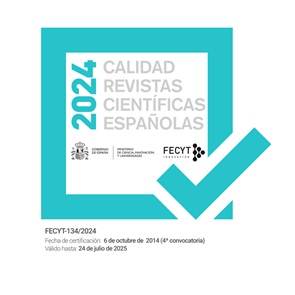EL REFLEJO RACIONAL Y EL DESMEMBRAMIENTO DEL YO EN LA ESTÉTICA DE NIETZSCHE
Abstract
An element remains constant in Nietzche's aesthetic formulations, from his theory of aesthetic forces (Apolline and Dionysiac) in The Birth of Tragedy to his later writings: the foundational character of the forces of dissolution and excess in relation to those of objectification and measure. Taking this structure of dependence as a model, I would like to argue, following Jean-Luc Nancy among others, that some of the most influential among the modern notions of rationality and selfhood involve a violent disavowal of, on the one hand, the continuity between intelligibility and the excessive powers of nature and, on the other, that between individuality and the individual's self-dismemberment. The double point of origin where these geneses meet is the self-sacrifice of the double figure of ontotheology: Socrates-Christ. At this point, the aesthetic tension between luminous reflection and obscure dismemberment is broken, and perpetuated only in so far as the new narratives of individuality and reason could be said to retain a mythical character.Downloads
-
Abstract506
-
PDF (Español (España))253
Las obras que se publican en esta revista están sujetas a los siguientes términos:
1. El Servicio de Publicaciones de la Universidad de Murcia (la editorial) conserva los derechos patrimoniales (copyright) de las obras publicadas, y favorece y permite la reutilización de las mismas bajo la licencia de uso indicada en el punto 2.
2. Las obras se publican en la edición electrónica de la revista bajo una licencia Creative Commons Reconocimiento-NoComercial-SinObraDerivada 3.0 España (texto legal). Se pueden copiar, usar, difundir, transmitir y exponer públicamente, siempre que: i) se cite la autoría y la fuente original de su publicación (revista, editorial y URL de la obra); ii) no se usen para fines comerciales; iii) si remezcla, transforma o crea a partir del material, no podrá distribuir el material modificado.
3. Condiciones de auto-archivo. Se permite y se anima a los autores a difundir electrónicamente las versiones pre-print (versión antes de ser evaluada) y/o post-print (versión evaluada y aceptada para su publicación) de sus obras antes de su publicación, ya que favorece su circulación y difusión más temprana y con ello un posible aumento en su citación y alcance entre la comunidad académica. Color RoMEO: verde.










